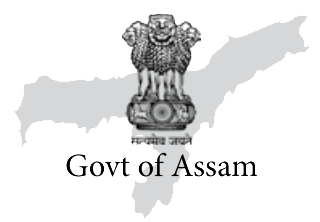India’s Eastern Himalayas stretch across the diverse biocultural landscape of the North East that is home to over 200 different indigenous communities. Over 70% of the region is rural and 80% are employed in nature dependent sectors like agriculture, forestry, fisheries tourism, food & beverages. The region’s hydrogeology is heavily regulated by forests in its watersheds: without them there would be no groundwater replenishment, floods would be far more devastating, soil erosion would accelerate and there would be little regularity in stream and river flows.
At the confluence of this region is Assam. According to the 2019 National Climate Vulnerability Assessment published by the Department of Science and Technology, Assam ranks among the top three most climate vulnerable States in India. In the report, Assam’s poor resilience to climate challenges is directly attributed to forest degradation within the State, resulting in poor forest access per capita in rural areas. It highlights the importance of forests in resilience for the State – and the importance of valuing the services trees provide, beyond immediate economic benefits. Valuing natural capital in both Assam and the Eastern Himalayas, therefore, is a question of valuing the future of our region.
Naturenomics™ for a nature-based economy
The ambitious Amrit Brikshya Andolan has come at the right time. Building an economy that is nature-positive, especially for rural communities, is one of the low hanging fruits that we must build on in the coming years.
In 2022, India announced a push for agroforestry, with special support to encourage traditional agroforestry systems of ethnic communities. This was a step in the right direction, towards climate-resilient agricultural policy. Agroforestry in Assam is a unique opportunity.
Our experiences with rural communities in Sonitpur and Jorhat districts through our Rural Futures model for afforestation on degraded land and converting farmlands to agroforestry show that trees are profitable. For communities on river islands, they see the benefits of planting trees through reduced soil erosion and land loss, minimising their income loss. Farmers participating in the programmes, earning an average of Rs 45,000 annually through agriculture, saw their incomes increase by 40-50% within a year of their involvement: Naturenomics™ in practice.
The idea of Naturenomics™ is simple: nature and economics are interdependent. Without nature, there is no economics. It proposes a new paradigm based on the valuation of our natural assets. Historically, we have had a linear extractive relationship with these natural assets, but Naturenomics™ is about investing in restoring and regenerating these natural assets while sustainably earning on their natural capital value. Global businesses and countries now realise the need to transition to an economic paradigm that integrates full cost natural capital accounting into their financial systems.
Valuing nature for a regenerative future
Momentum is growing, internationally, on the need to value natural ecosystems, not least because of the risks biodiversity loss pose to national economies. For example, by 2050, 2% of India’s annual GDP is expected to be lost to climate change as the result of ecosystem destruction & biodiversity loss. India is now one of 90 countries to sign up to the UN’s SEEA to value nature in policymaking. Valuation tells us not only what we lose, but what we stand to gain if we invest effectively in nature.
Assam is a natural capital rich State. The ABA is a right first step to replenishing its natural capital through trees outside forests. A 2006 study by the Green India States Trust indicated that 1 hectare of forest in Assam generates Rs 35 lakh annually in natural capital, through direct economic benefits and through indirect economic value created through soil regeneration and erosion prevention. New valuation studies are needed to reflect the new economic scenario: the rising value of forests because of increasing carbon market prices, the increasing cost of flood damage and soil erosion and desertification because of forest loss.
In 2020, the landmark study, the Economics of Biodiversity by Sir Partha Dasgupta, commissioned by the UK Treasury, systematically outlined how nature needs to be included in policy and economic decision-making at a national and international level. The Dasgupta Review advances a sophisticated economic case for understanding natural ecosystems through the lens of demand-supply economics: its ecosystems’ services are being consumed faster than its supply is being regenerated. To regenerate this supply, the report recommends including nature in national accounting and budgeting systems and the adoption of policies that increase financial investment in nature-based solutions, incentivise nature-regenerative businesses and penalise practices that destroy ecosystems.
New investments are needed in Assam’s forests, to enhance and restore them at scale and ensure the regeneration of our stock of natural assets against our usage. We need policies to incentivise MSMEs for the scientific restoration of degraded land, and in enhancing the value chain – processing, transport, market access and more – for a nature-based economy. Only by identifying the true value of the natural assets in Assam, can we ensure that the communities reap the economic benefits, as well as benefits through climate and ecological resilience.
Our rich biodiversity is an asset: for our future, we must continue to invest and grow it.













